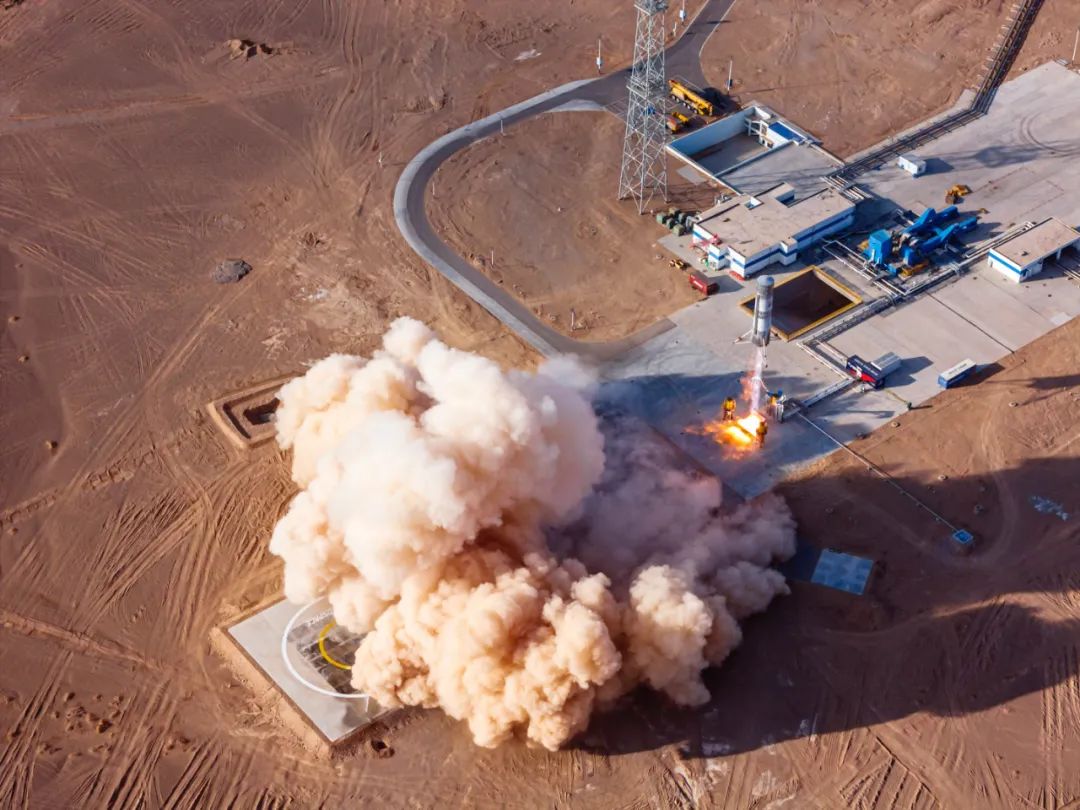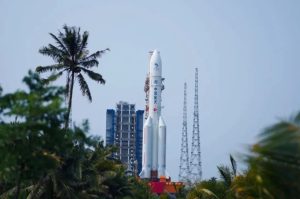China’s Landspace Completes Test Flight For Reusable Zhuque-3 Rocket
23rd Jan 2024
China’s Landspace has successfully conducted a test flight of their verification Zhuque-3 VTVL-1 reusable stainless steel rocket. The vertical takeoff and landing test took place at Jiuquan Satellite Launch Center in inner Mongolia, on 19th January. The test lasted approximately 60 seconds. Consequently, the rocket ticked all the boxes and validated the launch vehicle’s reusability in what was the first test run for Zhuque-3.
“The rocket lands smoothly and the landing point is accurate. In good condition, the test mission was a complete success! Jiuquan Satellite Launch Center worked side by side with the test team to improve various plans to ensure the complete success of the flight test,” Landspace said in statement. The test closely follows the launch of Landspace’s Zhuque-2 rocket, which launched in December last year.
The Test Launch Of VTVL-1
VTVL-1 is the prototype body structure of Landspace’s forthcoming Zhuque-3 rocket. It was used as a “test platform to verify key technology of the vertical return of the first sub-stage of the Zhuque-3 large-scale liquid oxygen methane reusable launch vehicle,” Landspace said. The Chinese start-up has been pioneering methane fuel use as of late, becoming the first company globally to launch a methane powered rocket in Zhuque-2.
The test itself saw VTVL-1 successfully launched to a desired peak of 350 m. Thereafter, the demonstrator returned to the launch site, touching the ground on the accurate landing point, Landspace said. The rocket took off at a speed of 0.75 metres per second and landed at an “altitude angle [of] about 0.14 [degrees]”.
VTVL-1’s body is 3.35 m with a length of 18.3 m and was fuelled using 80-tonnes of liquid oxygen methane. Landspace said the amount used was “based on continuous orbit verification”. Due to the scale of the test, Landspace described it as “the largest vertical take-off and landing test arrow in China.”
Significantly, VTVL-1 also provided essential data for upcoming launches of Lanspace’s other reusable rocket, Suzaku-3. “Other key technologies of the Suzaku-3… have laid a solid technical foundation for the first flight… in 2025,” Landspace said. That being, landing requirements from VTVL-1’s leg design, and the strategy for flight speed and thrust control.
Utilising Stainless Steel In VTVL-1 & Zhuque-3
The composition of VTVL-1 is stainless steel and is an unorthodox material to use in spacecraft manufacturing. Notably, the prototype launcher verified that stainless steel will be a viable material for Zhuque-3’s ‘body structure’.
In comparison to aluminium alloy – the traditional material used to build rockets – “stainless steel [is] low cost and [a] good welding process, which can significantly reduce the manufacturing cost of medium and large liquid rockets.” Additionally, the data secured from the VTVL-1 test has shown that stainless steel will not hinder Zhuque-3’s reusability.
Rocket Factory Augsburg & The Shift In Stainless Steel Opinions
Rocket Factory Augsburg have continuously promoted the use of stainless steel in spacecraft manufacturing. They have an array of stainless steel spacecraft in their arsenal, including their cargo capsule, Argo.
RFA’s CEO, Stefan Tweraser, remarked to Orbital Today that other space organisations were doubtful of how successful stainless steel would be at first. “Five years back, everybody said, ‘You can’t do that. It’s going to be too heavy. That’s going to ruin your business case.’ Well, less than half a year later, Elon Musk laid off his entire composite team and is building Starship from stainless steel”.
Tweraser added: “[We] very early in the process… found out with our algorithms, where the optimization between performance and cost and weight was, stainless steel structures are more suitable for a cost leadership approach than composite structures.” In conclusion, with VTVL-1 demonstrating the reusability of stainless steel, there could be a greater, more positive shift in opinions towards the material on the horizon.







Thank you for your comment! It will be visible on the site after moderation.